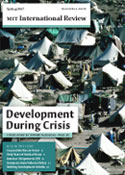Table 2.
The seven additional requirements of a land tenure instrument in protracted refugee situations.
- Low Housing Costs: Refugees often have very few resources from which to draw, and, as such, any way to keep the cost of housing to a minimum is helpful.
- Piecemeal Investment: Large, “lumpy” investments may be unrealistic among refugees since they have little in the way of cash or capital reserves, and often do not have access to reasonable or substantial credit. Therefore, any property tenure instrument chosen must allow for refugees to make small, gradual investments whose sum total value is ultimately recognized.
- Faith in the Future: Refugees most often do not know how long they will have to remain in exile. This uncertainty has appreciable effects on their psychological well-being, as well as on their long-term investments ranging from education to environmental stewardship.
- Strengthen Community Bonds: Professor Leaning of the Harvard Humanitarian Initiative stresses that physical assets are not by any means the only “resource materials” that help people in refugee situations to cope with their plight. In addition, there are social and psychological resources that serve as preconditions for human development—for example, attachments to home, community, and the future.
- Interface with Local Laws: As discussed above, domestic laws often bar refugees from land and real estate ownership. Any successful property tenure mechanism should then somehow serve as a proxy for direct property ownership.
- Contextual Appropriateness: The chosen mechanism would have to prove versatile enough to adapt to a wide variety of physical and socioeconomic contexts.
- Local Economic Growth: As noted earlier, local governments often see refugees as an economic liability. Therefore, the feasibility of any mechanism’s implementation will depend to a large extent on its benefit to the host economy.




